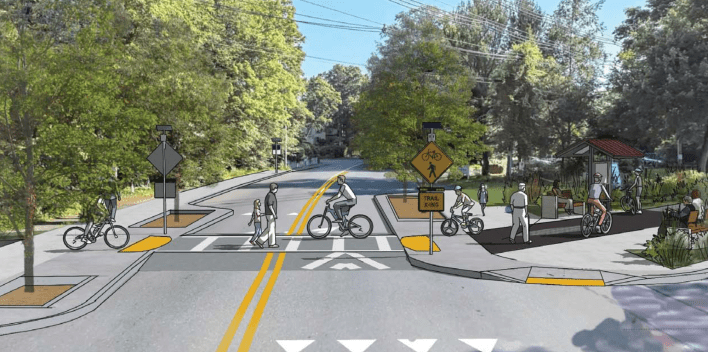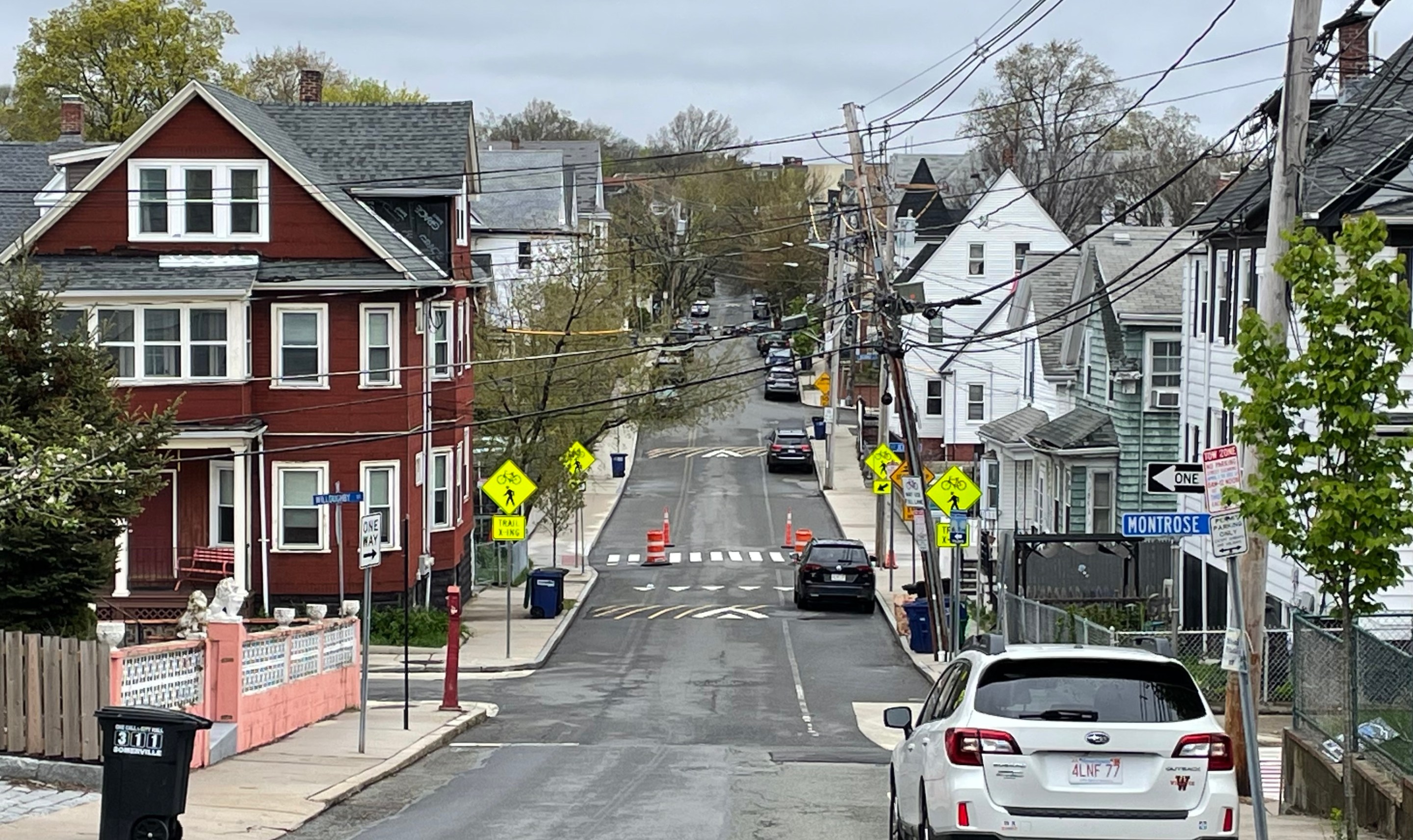Beach Street is a residential cut-through to Marblehead’s most popular beach. Residents there have been complaining about speeding cars for decades. Then, in February, Henry Peabody’s young daughter inadvertently let slip her puppy’s leash. The driver of the black SUV never stopped.
Henry’s heartfelt letter to the local paper, describing in graphic detail the dog’s fatal injuries and his daughter’s pain, roused residents to fill the March 18 meeting of the Traffic Safety Advisory Committee.
Before committee chairman Gary Hebert presented his speed reduction plan for Beach Street, he noted offhandedly that he had originally considered speed pillows, a mild type of speed hump. “Now, having discussed this with the town,” Hebert explained, “the town believes those speed pillows would represent a difficulty for plowing and other issues.”
Traffic Safety Advisory Committee David Kucharsky, a Marblehead resident who also happens to be the City of Salem’s Traffic and Parking Director, noted that Salem has installed humps on eight local streets so far.
“It is an education for the plow drivers,” Kucharsky said. “But plows know that they have to lift their blades as they go over it.” As for the temporary ones, “It does take a little bit of added effort. But for us in Salem it's been working.”
That this conversation about vertical speed control elements — a technical term that encompasses speed humps, speed cushions, speed tables, and raised crosswalks — was being conducted in public came as something new.
Three years earlier “the town” secretly nixed two planned raised crosswalks, despite having promised them to the public and the state.

In fact, the glossy cover image (above) for the Marblehead Rail Trail Master Plan depicts a raised crosswalk at one of the town’s major arterial roads. Bike advocates, including TSAC member Rick Smyers, had advocated for them and they were added to the town’s Complete Streets Prioritization Plan as well as the subsequent MassDOT grant application.
But just before the concrete was poured, town staff made an unpublicized site visit.
“Hi All,” then Town Planner Becky Curran wrote in a debriefing memo, “Based on our site meeting, here are some sketches of the changes we are looking for on the plans... . In case you can’t read my handwriting, the changes include eliminating raised crosswalks... .”
When asked, Curran admitted that she could not recall why the decision was made.
On October 2, a 14-year-old boy was riding his bicycle on the road a mere 120 feet from where one of those raised crosswalks was supposed to be. A collision with an SUV sent him to the hospital, his bike totaled.
It emerged at the Beach Street meeting that the “the town’s” objections had been raised by Amy McHugh, director of the Water and Sewers department, who was handed responsibility for roads, sidewalks, and the rail trail after budget cuts.
Even as we sat in her office discussing speed humps, she was managing a fuel spill crisis and directing her team to alert the state DEP. As Rick Smyers put it to me, “she’s in charge of roads, sewers, plowing, and drains. [Speed humps] make her life difficult in three different ways.”
“Why can Salem do it and we can’t?” I began. First, she explained, speed humps can damage the plows. The guys at B & C Brake and Clutch in Salem — which sells and services snow plows — confirmed that assertion. The vertical speed control element sends the plow blade into the air. It then crashes back down onto the pavement, causing damage to the blade. Scott in parts and Lou in service both advocated for seasonal humps. McHugh said putting those in and out seasonally is a lot of work.
Damaged blades aren’t a big problem for cities like Salem that use contractors — and it’s good for B & C’s business, I suppose. In Marblehead “it’s all done with town equipment,” McHugh countered, and our trucks are old and beat up already.
Then she surprised me with this fact: kids today just don’t know how to plow. “The ones who know how to [plow] are slowly starting to retire,” she explained. “And the people that are coming now didn't plow as kids. They didn't go out in their father's truck, shovel the driveway and plow it. I mean, they didn't do any of that.” Teaching them to raise the blade, as Salem does, was therefore not an easy solution.
I was also surprised to learn that Marblehead is already rife with unintentional speed bumps in the form of pipeline trenches. After the town cuts open the street for water and sewer work, it fills the trench high to account for settling. That leaves a bump. On the other hand, when National Grid cuts open the road for a gas line, they fill it back in level with the existing street, which quickly settles, leaving a divot.
McHugh vividly recalled one such divot not far from Beach Street. “I must have had to go out for like two weeks straight and listen to people complain because they could hear all the landscaping trucks,” she lamented. That was two years ago.
We can not know whether a speed hump would have saved the Peabodys' puppy, or whether the missing raised crosswalk would have protected the boy on the bicycle. Yet the evidence for the effectiveness of vertical speed control elements is indisputable. That’s why our neighbors in Salem, Swampscott, and other cities throughout the metropolitan region are installing them at a good clip.
So the question for Marblehead is not whether they work, or whether they create plowing hassles. The question is how we choose to balance the safety of kids and puppies against the problems of the plow guys.






